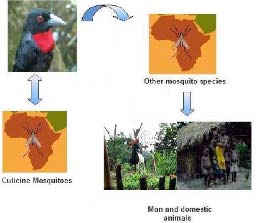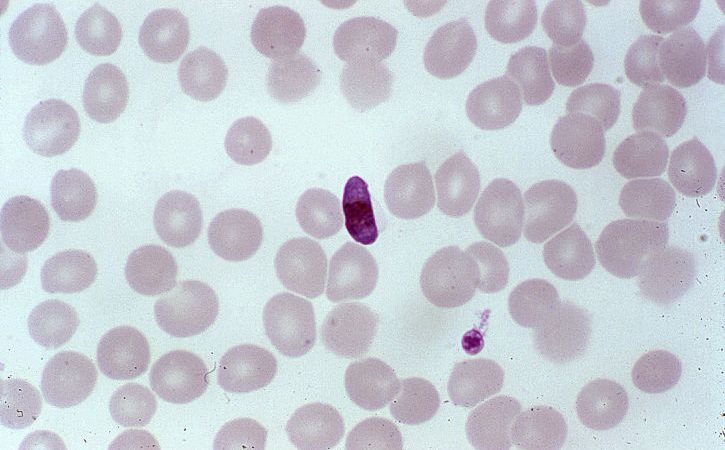Plasmodium parasites like those that cause malaria in humans also infect birds. Parasites are known to play an important role in host population dynamics and evolution, and mosquitoes infected with protozoan parasites exhibit modified behavior that increases their vectorial capacity. It has been documented that malaria-infected mosquitoes bite more frequently. With increasing loss of biodiversity, infectious diseases appear to be emerging and reemerging at a faster rate. Research on the links between these two conditions can have an important impact on our view of biodiversity and the services provided by natural ecosystems and how we manage them.
Given the relevance of mosquitoes as vectors of malaria, one would expect that all of these aspects would have been investigated in greater detail. In general, the spatial dynamics of the various mosquito species are poorly understood and there has been relatively little spatially-explicit research on them.
Our work focuses on sampling Culicine mosquitoes in malaria-endemic areas of Cameroon with three main objectives
1) Gauge the effects of deforestation on the diversity and host-specificity of avian malaria parasites in Cameroon.
2) Measure the effects of deforestation on mosquito communities.
3) Identify habitat effects on vectors that transmit generalist and specialist malaria parasites.
Our results may prove critical for understanding the seasonal disease outbreaks that occur in some habitats as well as help develop interdisciplinary tools and methods to forecast and mitigate risks to biodiversity and health.
Avian Malaria, Mosquitoes, and Birds in Cameroon
Pathogens have a high relevance for conservation, particularly in localities in which human influences are high. With increasing loss of biodiversity, infectious diseases appear to be emerging and reemerging at a faster rate. Research on the links between these two conditions can have an important impact on our view of biodiversity and the services provided by natural ecosystems and how we manage them.
Avian malaria has long been of interest as a model for the study of various aspects of human malaria. Its almost worldwide distribution and ease of maintenance through blood passage has enabled the elucidation of many aspects of the schizogonic stages of its life cycles in birds (the vertebrate host). The malaria parasite depends upon mosquitoes to transmit it from host to host (Fig. 1). Within the host, the parasite develops into two forms. One form reproduces asexually (schizogonic stage) within red blood cells which then burst and release offspring to infect more red blood cells. These rounds of reproduction provoke malaria’s characteristic fevers. The other form of the parasite reproduces sexually (sporogonic stage), does not cause symptoms, and is transmitted to mosquitoes. Much less attention has been paid to studying the sporogonic cycles in mosquitoes. Given the relevance of mosquitoes as vectors of malaria, one would expect that all of these aspects would have been investigated in greater detail. In general, the spatial dynamics of the various mosquito species are poorly understood and there has been relatively little spatially-explicit research on them.
Our work focuses on sampling Culicine mosquitoes in malaria-endemic areas of Cameroon and using multiplex Polymerase Chain Reaction (PCR) techniques to provide information about the status of malarial infection and genetics of the host, vector, and parasite. Culicine mosquitoes are the primary vectors of malaria in tropical Africa and their abundance and attributes, such as feeding habits and host preference, vary greatly from one species to another. Their feeding habits constitute a significant aspect of their vectorial capacity.
Our results may prove critical for understanding the seasonal disease outbreaks that occur in some habitats as well as help develop interdisciplinary tools and methods to forecast and mitigate risks to biodiversity and health.

Fig. 1. Malaria parasites belong to the Plasmodiumgenus and infect many types of mammals and birds. Only certain species of mosquitoes carry the parasites. Infected birds are fed on by local mosquitoes that can pass the parasite through future bites.
Related Publications


